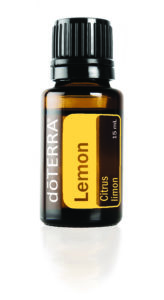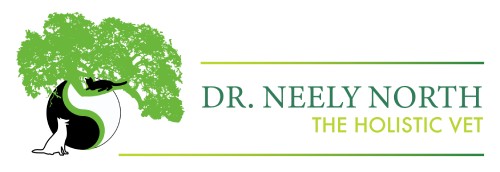In traditional Chinese veterinary medicine (TCVM), the term for infection is ‘damp heat’. When this is the diagnosis, I often use foods that “drain damp” according to food therapy. Examples of damp heat include: Urinary tract infection is damp heat of the bladder; skin infections are damp heat of the skin; ear infection is actually gall bladder damp heat (the gall bladder channel encircles the ear). Here is a hint: damp heat is stinky!
Mung bean and mung bean sprouts: these are very cooling in nature (yin tonics) and can be used to ‘drain the damp’ in Chinese medicine (= help with bacteria). I purchase these at one of the Asian markets around town (pictured at Viet Huong but we also have Asia Market and Oriental market here in Savannah- each are great with helping you find things). about 1 tbsp per 20 # of dog well cooked for up to two weeks. CAUTION if not well cooked(slow cook, low temp) or given in too large of a dose will cause diarrhea. These are available at local asian markets (we have at least 3 in Savanah) and you may have probably seen them! Viet Huong is on Hodgson Memorial between Stephenson and Eisenhower. Bob’s red mill is also a nice source (USA).


Honey: Locally sourced honey can reduce healing time of skin conditions, relieve seasonal allergies, improve digestive health (it’s a pre biotic food!) and it has antibiotic, antioxidant, anti fungal, anti inflammatory, cardio protective and gastro-protective properties. (Do not use in young animals- under 6 mo or animals who are allergic to honey or bees)
Dose: 1/4 tsp per 10 lbs of dog; 50# plus dogs about 1.5 tsp/ day. Manuka honey is particularly potent antibacterial, anti fungal and wound healing properties.
Note you can find medical honey for wound care at most pharmacies now, near the bandaids, neopsorin etc.
Alfalfa sprouts / seeds: Consider as a tea added to diet / food: steep 1 tbsp seed or 2 oz dried leaf in 1 qt boiling water. Dose 1/4 cup of tea per 20# daily for up to two weeks. This ‘dries damp’, detoxifies, slight diuretic, benefits the urinary system, cleanses the intestines, takes harmful acids out the the blood. BUY ORGANIC with this one, most of the alfalfa in our country contains GMO (90% of it).
Apple cider vinegar : Organic unfiltered ACV with the ‘mother’ is what is recommended in diluted forms for topical disinfection. Many humans use this internally but I have not done this in many cases with animals.
Dose: I only use about 1-2 tsp per 2 oz (60 mls) of a topical spray
Topical colloidal sliver: I dilute this with aloe juice (intended for ingestion) and add 1 tsp of ACV as a spray for mild skin infections. I also add 1% DoTerra essential oils depending on what I am treating (example DoTerra lavender is naturally anti histamine/ soothing)
Dose: 1-2 tbsp per 2 oz (60 mls) as a topical spray
Lemon and lime are both antiseptic. When the juice is used, they tend to burn as topicals though so I use a 1% dilution of the DoTerra essential oils if needed as a topical. This bottle of lemon EO is also what I primarily use to clean my home, diluted to mop floors etc. Remember your pets absorb through their feet whatever you use to mop!

Melaleuca (tea tree) and oregano Doterra Essential Oils: (humans ONLY) This is a great (short) you tube video about how these oils work together against bacteria. One breaks down the outer protective layer around the bacteria and the oregano (carvecrol) makes a hole in the wall of the bacteria then ions can get in and the bacteria lyses (dissolves). https://youtu.be/28igkFxGUbM
I use these two oils along with Frankincense, Lemon, On Guard and Black pepper(I add this to the traditional 5 below) in a blend to help me when I’m sick OR when everyone around me is getting sick to stay healthy.

(If you are interested in purchasing DoTerra essential oils, I am one of their wellness advocates and I can help you get signed up for great prices! https://www.doterra.com/US/en/site/neelynorth )
Coconut oil: There was a study done in 2016 where they had one group of children swish with Chlorhexidine (note, this is what we scrub our hands and the animal’s skin with before surgical procedures!) and the other group with coconut oil. The study concluded there was no statistical difference between the anti microbial effects of the coconut oil and Chlorhexidine against the oral bacteria they studied. (Study link here: https://www.ncbi.nlm.nih.gov/pmc/articles/PMC5109859/ )
There is a previous blog on the brand of coconut oil I recommend and why – see this before purchasing a coconut oil with these intended uses!
This is only a few of the things that exist outside of a pharmacy that have anti bacterial properties. Stay tuned for more in the future!
A note from Dr. North:
My advice with illness is always see your veterinarian for a diagnosis and hear the western treatment options. Once you know what’s wrong, it’s your choice how you decide to treat your pet. As for me, I do consider myself to be an integrative DVM, using the best of both worlds. That being said, I frequently try to get severe infections under control with the use of local or systemic antibiotics. The use of these drugs prevents a lot of suffering! After that, I commonly recommend use of these remedies to help avoid relapse/ aid in prevention especially if a pet has a chronic issue with infections. And, as always, remember moderation and rotation! I usually try not to use a natural remedy for more than 14 days in a row.
Another tip is this: at the very first sign of a problem, start your natural remedies to see if you can keep it from being a full blown infection. I have a dog with intermittent urinary tract infections. Sometimes, even when she’s not showing signs, I’ll add mung bean to her food for a week just to help her have a ‘bladder detoxifying and yin tonic food’.

Finally, I have no problem using some of these remedies along with antibiotic treatments. My favorite way to use them is with mild infections that are not causing any suffering OR at the very first sign of a problem to hopefully ward off a full blown infection. An example would be at the VERY START of a dog chewing on an area (hotspot) use some aloe juice, colloidal silver and a small amount of apple cider vinegar topically to try to keep it form getting infected. I frequently add some DoTerra Essential oils to these preps as a 1% dilution as well.
Want to know more? This is a great discussion about antibiotic resistance and the use of essential oils:
AND
https://www.hindawi.com/journals/ecam/2016/3012462/
FDA disclaimer:
These statements have not been evaluated by the Food and Drug Administration. These products are not intended to diagnose, treat, cure or prevent any disease.
Resources:
Healing with Whole Foods by Paul Pitchford
The Chi Institute Food Therapy Course
AHVMA proceedings 2019 Laurie Dohmen, VMD, MS
—
Neely North, DVM, CVA, CVFT, CVMMP
Savannah Holistic Veterinary Care
www.savannahholisticvet.com

